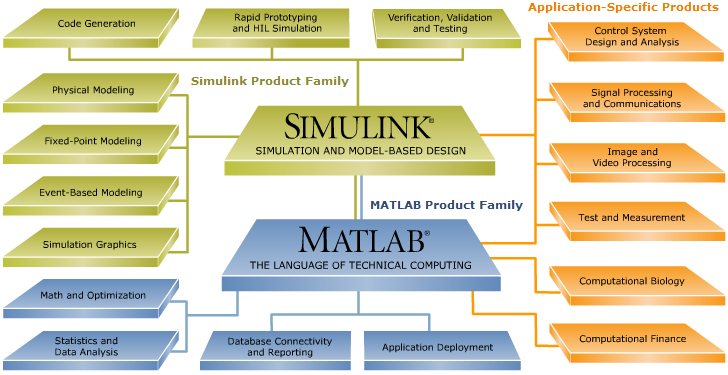MATLAB is a high-level technical computing language and interactive environment for algorithm development, data visualisation, data analysis, and numeric computation. Using the MATLAB product, you can solve technical computing problems faster than with traditional programming languages, such as C, C++, and Fortran.
You can use MATLAB in a wide range of applications, including signal and image processing, communications, control design, test and measurement, financial modelling and analysis, and computational biology. Add-on toolboxes (collections of special-purpose MATLAB functions, available separately) extend the MATLAB environment to solve particular classes of problems in these application areas.
MATLAB provides a number of features for documenting and sharing your work. You can integrate your MATLAB code with other languages and applications, and distribute your MATLAB algorithms and applications. Features include:
- High-level language for technical computing
- Development environment for managing code, files, and data
- Interactive tools for iterative exploration, design, and problem solving
- Mathematical functions for linear algebra, statistics, Fourier analysis, filtering, optimisation, and numerical integration
- 2-D and 3-D graphics functions for visualising data
- Tools for building custom graphical user interfaces
- Functions for integrating MATLAB based algorithms with external applications and languages, such as C, C++, Fortran, Java, COM, and Microsoft Excel
The MATLAB System
The MATLAB system consists of these main parts:
Desktop Tools and Development Environment
This part of MATLAB is the set of tools and facilities that help you use and become more productive with MATLAB functions and files. Many of these tools are graphical user interfaces. It includes: the MATLAB desktop and Command Window, an editor and debugger, a code analyser, and browsers for viewing help, the workspace, and folders.
Mathematical Function Library
This library is a vast collection of computational algorithms ranging from elementary functions, like sum, sine, cosine, and complex arithmetic, to more sophisticated functions like matrix inverse, matrix eigenvalues, Bessel functions, and fast Fourier transforms.
The Language
The MATLAB language is a high-level matrix/array language with control flow statements, functions, data structures, input/output, and object-oriented programming features. It allows both “programming in the small” to rapidly create quick programs you do not intend to reuse. You can also do “programming in the large” to create complex application programs intended for reuse.
Graphics
MATLAB has extensive facilities for displaying vectors and matrices as graphs, as well as annotating and printing these graphs. It includes high-level functions for two-dimensional and three-dimensional data visualisation, image processing, animation, and presentation graphics. It also includes low-level functions that allow you to fully customise the appearance of graphics as well as to build complete graphical user interfaces on your MATLAB applications.
External Interfaces
The external interfaces library allows you to write C/C++ and Fortran programs that interact with MATLAB. It includes facilities for calling routines from MATLAB (dynamic linking), for calling MATLAB as a computational engine, and for reading and writing MAT-files.
Building on MATLAB
MathWorks offers a huge number of other software packages that can be used to extend MATLAB in order to increase functionality. The following diagram shows relationship between MATLAB and the other software packages available.

Getting Started with MATLAB
In time we will aim to write a guide on how to install and use MATLAB. Meanwhile here is a good introduction video to get you started.
